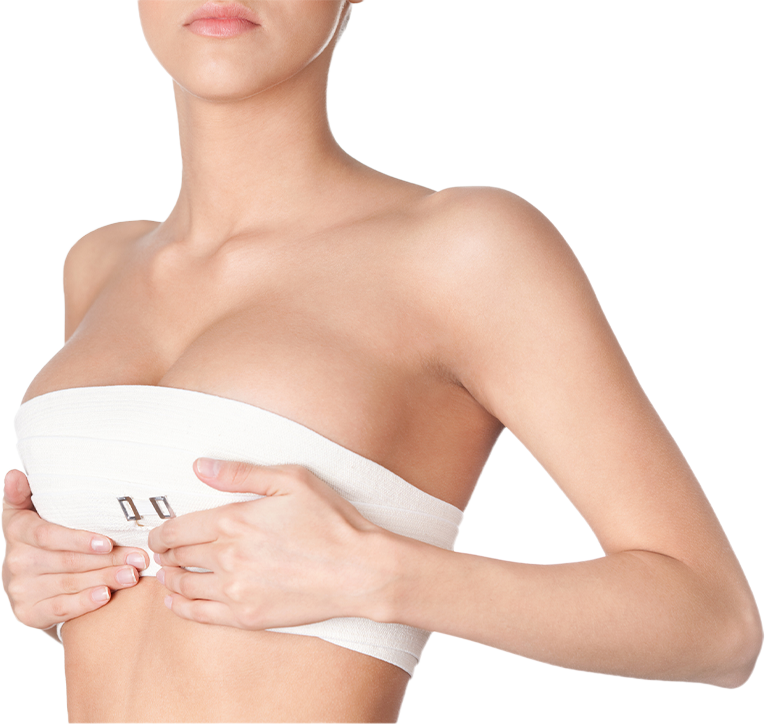Main Content
Introduction
Breast reduction—also known as reduction mammoplasty—is a transformative procedure that removes excess breast tissue, fat, and skin to create a smaller, more proportionate chest. Beyond the cosmetic benefit of a sleeker silhouette, many women experience significant relief from chronic back, neck, and shoulder pain, eliminate bra-strap grooves, improve posture, and regain freedom in physical activities. At Monarch Plastic Surgery & Skin Renewal Center in Sandy Springs—serving Buckhead and Atlanta—Dr. Carmen Kavali personalizes each reduction mammoplasty to your anatomy and lifestyle, combining precise tissue removal with an uplift to restore both comfort and youthful breast position.
Who Is Right for Breast Reduction?
Consider breast reduction if you:
- Experience Physical Discomfort: Chronic neck, back, or shoulder pain from supporting heavy breasts.
- Have Bra-Strap Grooves: Deep indentations or skin irritation under the straps.
- Limit Activities: Find exercise, sports, or daily tasks difficult due to breast size.
- Clothing Fit Issues: Struggle to find well-fitting tops or underwire bras.
- Desire Proportional Balance: Want breasts that fit your frame and body shape.
Ideal Candidates are at least 18 years old with fully developed breasts, in good overall health, maintain a stable weight, have realistic expectations, and are non-smokers—or willing to quit four weeks before and after surgery.
What to Expect During Your Consultation
-
Initial Team Assessment
Upon arrival, you’ll meet one of Dr. Kavali’s Physician Assistants to:
- Review your medical history and any symptoms (pain, grooves, posture issues).
- Discuss your goals for size, shape, and comfort.
- Take standardized photographs for your medical record.
-
Surgeon Consultation with Dr. Kavali
Dr. Kavali will:
- Personally hear your goals, concerns, and “ideal” breast size and shape.
- Evaluate your expectations against what can realistically be achieved.
- Examine your breasts, assessing size, shape, skin quality, and nipple–areola position.
-
Physical Measurements & Analysis
- Breast Base Width: Guides how much tissue can be safely removed.
- Nipple-to-Fold Distance: Determines lift requirements.
- Skin Elasticity: Assesses ability to retract after tissue removal.
- Degree of Ptosis (Sagging): Grades I–III to select lift pattern.
-
Education & Planning
- Review incision options (anchor, vertical/lollipop, or doughnut/Benelli) and pedicle techniques.
- Discuss pedicle choice (inferior, superior, or central) to preserve blood supply to the nipple–areola complex.
- Outline preoperative steps: labs, medication adjustments, and lifestyle modifications.
Consultation Goal: A comfortable, informative visit that leaves you fully informed and confident in your decision.
Four Key Decisions in Your Breast Reduction
-
Incision Pattern & Lift Technique
- Anchor (Inverted-T): Periareolar, vertical, and inframammary scars—ideal for large reductions and significant lifts.
- Vertical (Lollipop): Periareolar plus vertical scar—moderate reduction with less scarring.
- Benelli (Doughnut): Circular periareolar scar—small reductions and mild lift, minimal scarring.
-
Pedicle Blood Supply
- Inferior Pedicle: Tissue stalk under the nipple—commonly used for safety in large reductions.
- Superior Pedicle: Tissue above the nipple—for moderate reductions with good projection.
- Central Pedicle: Tissue directly behind the nipple—balances projection and safety.
-
Volume of Tissue Removed
- Measured in grams or cup sizes—determined by symptom relief needs and aesthetic objectives.
- Guided by preoperative measurements and your comfort level with postoperative size.
-
Nipple–Areola Complex Management
- Elevation: Repositions nipples to a youthful height.
- Resizing: Adjusts areola diameter if needed for proportional appearance.
Sensation Preservation: Pedicle choice and gentle handling aim to maintain nipple sensation and breastfeeding potential when possible.
The Surgical Procedure: Step by Step
-
Anesthesia & Preparation
- General anesthesia administered by a board-certified anesthesiologist.
- Preoperative markings in upright position to map incisions and tissue resection.
-
Incision & Tissue Resection
- Incisions follow the chosen pattern.
- Excess skin, fat, and glandular tissue are removed precisely, sculpting the new breast mound.
-
Pedicle Creation & NAC Repositioning
- The chosen pedicle maintains blood supply to the nipple–areola complex.
- The NAC is elevated and resized, then secured on the pedicle.
-
Contour Refinement & Liposuction (if indicated)
- Liposuction underarms or lateral chest refines contour and removes fatty excess for smooth transitions.
-
Closure & Dressing
- Multi-layer, absorbable sutures support deep tissues and skin closure.
- Steri-strips and a supportive surgical bra are applied to minimize swelling and support the new shape.
Procedure Duration: 2–3 hours (varies with reduction extent)
Setting: Accredited outpatient facility—same-day discharge with a responsible escort
Immediate Post-Operative Care
- Pain Management: Prescription or over-the-counter oral pain relievers and cold compresses for comfort.
- Support Garments: Wear the surgical bra continuously for 4–6 weeks to support healing tissues.
- Activity Restrictions: Rest with upper body elevated; avoid lifting, pushing, pulling, driving, and strenuous activities for two weeks.
- Wound Care: Keep dressings clean and dry; follow instructions for showering and incision care.
Recovery Timeline & Aftercare
Weeks 1–2
- Swelling & Bruising: Peaks around days 2–4, then begins to subside.
- Follow-Up Visit: One-week postoperative check to monitor healing and adjust garments.
- Activity: Resume light, non-strenuous activities; avoid chest muscle engagement.
Weeks 3–6
- Scar Management: Silicone sheets or gels can help soften scars as incisions heal.
- Support Transition: Move from surgical bra to a well-fitting, supportive soft bra.
- Gentle Exercise: Light walking for circulation; no chest-targeted workouts until cleared.
Months 2–6
- Final Contour: Swelling resolves and tissues settle by three to six months.
- Exercise Clearance: Chest and upper-body workouts typically resume at six weeks.
- Long-Term Support: Continue wearing supportive bras for high-impact activities.
Key to Success: Strict adherence to Dr. Kavali’s aftercare instructions maximizes comfort and optimizes aesthetic outcome.
Potential Risks & Considerations
While breast reduction is generally safe, possible complications include:
- Bleeding or Hematoma: May require drainage if significant.
- Infection: Rare; treated with antibiotics or, in severe cases, temporary removal of sutures.
- Poor Wound Healing: Tension at closure sites can delay healing or widen scars.
- Nipple–Areola Sensation Changes: Usually temporary, but can be permanent in rare cases.
- Asymmetry: Minor volume or shape differences can be refined with secondary revisions.
- Scar Visibility: Although they fade over time, scars will be permanent and require sun protection.
Dr. Kavali discusses each risk during your consultation, ensuring you make an informed decision.
Lifestyle Impact & Long-Term Maintenance
- Symptom Relief: Most patients experience immediate reduction in pain and improved posture.
- Activity Freedom: Easier participation in sports and exercise without breast-related discomfort.
- Clothing Fit: Simplified undergarment and clothing choices, with improved comfort.
- Scar Care: Proper sun protection and topical treatments optimize scar maturation.
- Stable Results: Maintaining a stable weight and healthy lifestyle preserves your new shape.
Regular follow-up appointments allow Dr. Kavali to monitor healing, address concerns, and ensure lasting satisfaction.
Choosing the Right Surgeon & Facility
When considering breast reduction in Sandy Springs, Buckhead, or Atlanta, verify:
- Board Certification: American Board of Plastic Surgery.
- Mammoplasty Expertise: Fellowship or extensive training in breast reduction techniques.
- Accredited Facility: AAAASF or Joint Commission accreditation.
- Before-and-After Gallery: Real patient images demonstrating both functional relief and cosmetic enhancement.
- Patient Testimonials: Consistent praise for relief of discomfort, aesthetic results, and compassionate care.
Dr. Carmen Kavali meets and exceeds these criteria, offering safe, personalized breast reduction in our state-of-the-art Sandy Springs suite.
Cost & Financing Options
Breast reduction is an investment in your health and well-being. At Monarch Plastic Surgery we provide:
- Transparent Pricing: Detailed quotes covering surgeon, anesthesia, and facility fees.
- Flexible Financing: Custom payment plans to fit your budget.
- No-Pressure Scheduling: Time to decide without obligation.
Our Patient Coordinator will review financial options after your consultation.
Next Steps: Scheduling Your Consultation
Ready to relieve discomfort and achieve a more balanced figure with breast reduction? Contact Monarch Plastic Surgery & Skin Renewal Center:
- Call: 404.250.3333
- Email: info(at)drkavali(dotted)com
- Visit: 6045 Barfield Rd, Suite 100, Atlanta, GA 30328
- Online: Request a Consultation
Your personalized consultation will include a thorough exam, discussion of reduction goals, and a clear surgical plan—starting your journey to a more comfortable, confident you.


